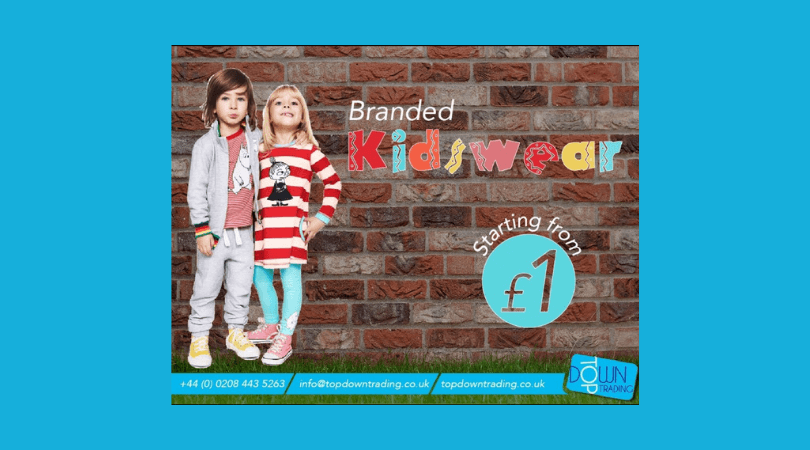“We risk turning the customer off by making them feel like we’re suggesting they be less hygienic. We’re going up against years of cultural conditioning here.”
I have a confession to make: I’ve been wearing the same black T-shirt every single day for two weeks now and I haven’t washed it yet. Anybody who knows me will realize this is very out of character. I’m a laundry addict. I get inordinate pleasure out of transforming my toddler’s mud- and applesauce-covered clothes into freshly laundered, neatly folded piles. And yet, I may hold off on washing this T-shirt for another few weeks. It miraculously looks (and smells!) like it was just cleaned. This $65 T-shirt is made by a startup called Unbound Merino, founded in 2016, that creates wool travel clothes that can go weeks without being washed.
Unbound is part of a broader wave of startups designing clothes that require less laundering. An eco-friendly brand called Pangaia, which launched late last year and already counts celebrities like Jaden Smith and Justin Bieber as fans, creates $85 seaweed fiber T-shirts that are treated with peppermint oil to keep the shirts fresher longer between washes. The brand estimates that this will save about 3,000 litres of water over the course of a lifetime, compared to a regular cotton T-shirt. Then there is menswear label Wool & Prince, which creates everything from $128 oxford shirts to $42 boxer briefs out of wool, all designed to be washed infrequently. Last year, the company launched a sister womenswear brand called Wool& that makes dresses that can be worn for 100 days straight without washing.
This new flock of wash-less brands are capitalizing on the convenience of not having to launder your clothes a lot, which is particularly useful if you’re travelling or crunched for time. But they’re also making an environmental argument: Over-washing clothes is not good for the planet. Washing machines account for 17% of our home water usage, and a quarter of a garment’s carbon footprint over the course of its life-time comes from cleaning it. And yet, washing machine company AEG estimates that 90% of clothes washed aren’t actually dirty enough to be thrown in the laundry basket.
Part of this has to do with the fact that laundry detergent brands have convinced consumers that they need to wash their clothes frequently, perhaps even after every wear, to be clean and hygienic. For instance, many laundry detergent ads show parents washing their children’s muddy and messy clothes, suggesting that good parenting involves doing a lot of laundries. Mac Bishop, who founded Wool & Prince, saw this firsthand. His first job after college was working for the marketing department of Unilever, which produces dozens of laundry detergent brands around the world. “The only way to grow as a laundry detergent brand is to make customers feel like they need to keep washing their clothes more and more,” he says.
Decades of marketing from the cleaning industry has conditioned many people to throw their clothes in the laundry after one day’s wear, even though this is rarely necessary. So one of the biggest challenges for brands pitching clothes that don’t need to be washed frequently is to convince people that they will not be gross, smelly, or dirty if they aren’t constantly doing loads of laundry.
DESIGNING A WASH-LESS SHIRT
Before brands can convince consumers to stop washing their garments, they first need to design clothes that will live up to this promise. This comes down to carefully selecting materials that are more resistant to odour and dirt. All of these brands believe that a big part of their mission is also to reeducate customers about how much laundering is necessary–and when cleaning becomes superfluous. “It’s important to understand what makes clothes dirty in the first place,” says Bishop. “Sweat itself is clean. It’s when it gets absorbed in clothing that it begins to attract bacteria and smell bad. So the key is finding materials that don’t trap sweat.”
Both Unbound Merino and Wool & Prince rely heavily on wool because the material has many properties that make it less likely to get dirty. Wool is naturally breathable and moisture-wicking, which means that when you sweat the perspiration evaporates from your skin into the air, rather than getting trapped inside the fabric. But this also means that wool fabrics are temperature regulating. When it is hot, the evaporation of your sweat makes you feel cool. But when you are cold, the wool creates a layer of insulation that traps your body heat, keeping you warm. (The miraculous properties of wool make sense you when considering that it evolved to help sheep manage different weather conditions.)
Of course, the usefulness of wool as a clothing fibre has been known for centuries across many cultures. And more recently, outdoor brands like Patagonia and Icebreaker have used wool to create temperature-regulating inner layers and flannel shirts that stay clean on hiking or camping trips. Sneaker brand All birds creates wool shoes that can be worn without socks without making your feet smell. But these newer startups have worked to incorporate wool into clothes that can be worn every day.
Unbound Merino, for instance, launched with T-shirts, underwear, and socks that are extremely light and soft to the touch so that they feel like the cotton or polyester blends that people expect. The brand’s founders spent a long time considering the wide range of wool fibres on the market before settling on their final fabric. The shirt I have been wearing for two weeks, for instance, is made from 100% merino wool that is ultra-fine at 17.5 microns, a unit of thickness. (Consider that your hair is between 50 and 100 microns.) “Not all wool is created equal,” says Dima Zelikman, Unbound Merino’s co-founder. “Different sheep produce different kinds of wool. Our goal was to create a fabric that was extremely soft and thin, but that still had all the benefits of wool.”
Bishop, for his part, decided to create wool blends with other materials, including nylon and linen to achieve different effects. Synthetic fibres, for instance, are able to make clothes more durable because they are hardier. This was a difficult decision, because while wool and other natural fibres are biodegradable, nylon, polyester, and other synthetics are plastic-based so they will not decompose, but sit in landfills forever. “We had some difficult decisions to make when it came to sustainability,” Bishop says. “But we decided that our goal as a brand was to make it easier for people to own fewer clothes, and keep them for longer. So we decided to incorporate synthetics.”
Pangaia took a different approach. Instead of wool, it creates T-shirts, sweatshirts, and joggers out of organic cotton blended with seaweed fibre, which is both sustainable fabrics. The company also derives dyes from food waste and other natural resources, which is less toxic and relies on less water than traditional synthetic dying methods. Pangaia works with material science researchers to find ways to make the products more sustainable. For instance, they have treated the fabric with peppermint oil, which has antibacterial properties and ensures that clothes don’t need to be washed as frequently. “[It] helps to keep the garments fresher for longer without any toxic chemicals,” Dr Amanda Parkes, the chief innovation officer at Pangaia, says over email.
For Pangaia, the wash-less philosophy is primarily about sustainability, rather than convenience. But Parkes makes the case that it is actually very difficult to convince someone not to wash their clothes frequently. She believes that the only way to really change consumer behaviour is to let them wear the product, then sees for themselves that it does not smell bad or feel dirty. “True behaviour change is about building customers’ confidence in the functionality of our products,” she says.
CONVINCING CUSTOMERS TO STOP DOING LAUNDRY
In fact, all these brands wrestle with how to convince customers to wash their clothes less frequently without grossing them out. While the fact that their products require less care is a key part of their value proposition, none of these brands leads with the message that customers don’t need to clean them. “We risk turning the customer off by making them feel like we’re suggesting they be less hygienic,” Bishop says. “We’re going up against years of cultural conditioning here.”
For Unbound Merino, a successful strategy has been to focus on consumers who are looking for clothing solutions when they’re travelling. The brand first launched with an Indiegogo campaign that promised customers that they could travel for weeks with just a backpack because the wool T-shirts, underwear, and socks would stay fresh. “We were targeting people who already felt that washing clothes on the road were an inconvenience,” says Zelikman. “But we believed that when customers saw for themselves how the shirts stay clean day after day, they would want to incorporate them into their everyday wardrobe.”
Wool & Prince also launched with a focus on convenience and minimalism. Bishop wanted to create products that were versatile enough for customers to wear day after day, in many contexts, so they could own less. And for this to work, it meant ensuring that clothes could be worn for a while without washing them since, in theory, the customer would only have a few items in their closet. The brand found that this messaging resonated well with male consumers, particularly those who already disliked doing laundry.
But Bishop was worried that women would not be so responsive to the idea of not washing their clothes, partly because cleaning products largely target female consumers, priming them to be more judicious about cleanliness. As someone who worked in Unilever’s marketing department, he was well aware of the extraordinarily sexist history of laundry detergent commercials, which drummed in the notion that laundry was the exclusive domain of women. This is why, when he decided to create womenswear last year, he launched a separate brand for women, Wool&, with a distinct marketing message. The brand’s initial research with customers suggested that women would be more responsive to messages about how washing less was more eco-friendly, while men seemed to care more about how washing less saved time.
When the brand launched, Bishop mentioned to a reporter that if anyone wanted to wear Wool&’s $128 dress for 100 days without washing it, as he had done with his shirt, he would give them a dress for free. The brand received such an influx of women eager to take the challenge on that Wool& had to cap the number of free dresses at 50. Now, Wool& is expanding beyond its first product, a swing dress, to create a wider range of silhouettes. “As with our menswear brand, we’re committed to creating versatile, functional clothes that can be worn year-round, for the woman who wants to own less,” Bishop says. “I think a growing number of consumers are trying to cut back on their overconsumption.”
WILL THE REST OF THE INDUSTRY CATCH UP?
While the brands I have featured in this story have made less frequent laundering a core part of their design and marketing, there’s a growing awareness among consumers over the last few years that we may be over-washing most of the clothes in our wardrobe. In 2017, the nonprofit Fashion Revolution, which promotes sustainability and social justice in the fashion industry, launched a major campaign called the Care Label Project to educate consumers about the environmental impact of over-washing their clothes. The organization partnered with the washing machine manufacture AEG to help 14 designers incorporate labels that said “Don’t Overwash” into 18,200 styles of clothes.
The point of the project was to make the case that the current system of care labels on clothes are antiquated. The symbols we find on our clothing tags were first invented half a century ago, and often they aren’t very carefully thought through. One designer who contributed to the project, Doriane van Overeem, believes that many fashion brands just don’t want to go through the hassle of educating the customer on the most eco-friendly way to clean garments themselves. This is why they ask the customer to dry clean them, a process that is not very sustainable but frees the brand of any responsibility should a garment get ruined.
This new generation of wash-less brands is contributing to the broader effort of helping consumers better understand the environmental impact of caring for their garments. In the end, as Bishop says, it takes time to change someone’s behaviour and psychological outlook, especially after years of being told that they’re unclean if they aren’t wearing freshly laundered clothes. All three of these brands believe that the best way to get the message across is for the customer to have a good experience with their clothes. “Once the clothes are in customer’s hands, you’ve already won half the battle,” says Bishop. “They’ll suddenly realize they haven’t washed their clothes in a couple of weeks and it still feels fresh.”
I’m now on week three of wearing a black T-shirt. It’s so versatile, I’ve worn it with shorts, skirts, and jeans. It kept me cool through several sweltering days when I took my kid to a theme park. And as promised, it still looks crisp and smells fresh. (Believe me, I’ve sniffed it a lot.) It might just be enough to convert a laundry junkie like me to back off from my beloved washing machine.
[Photo: courtesy Unbound Merino]
BY ELIZABETH SEGRAN 10 MINUTE READ
FastCompany





